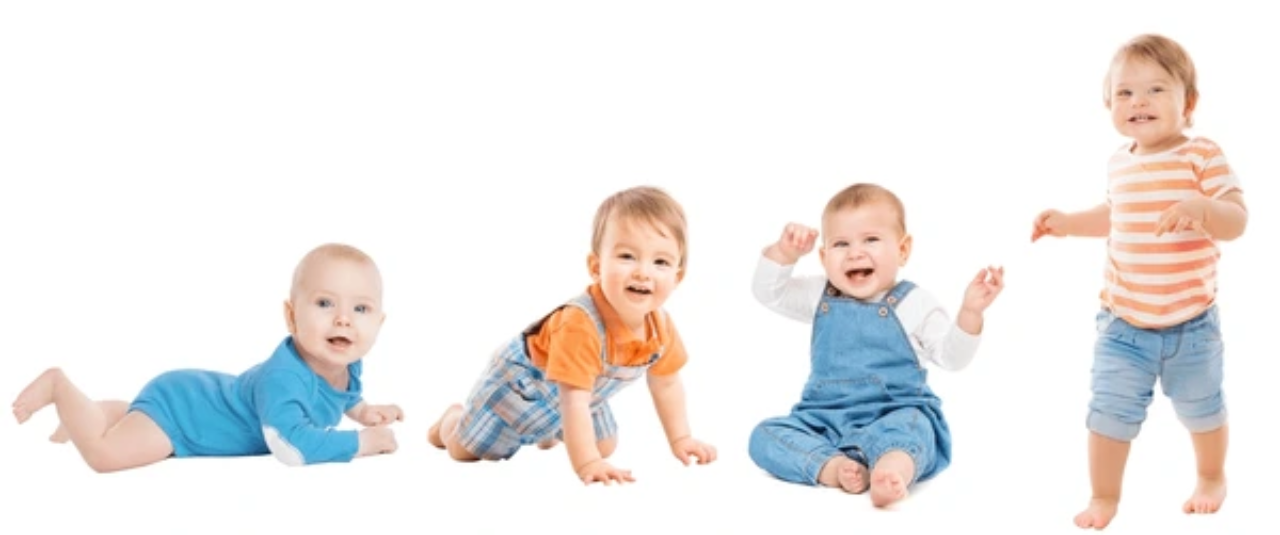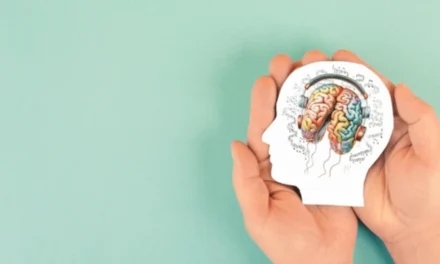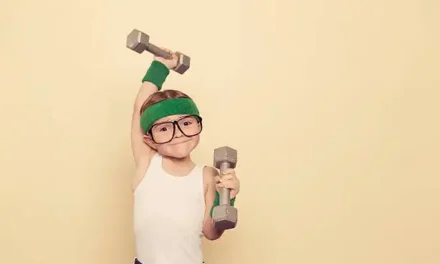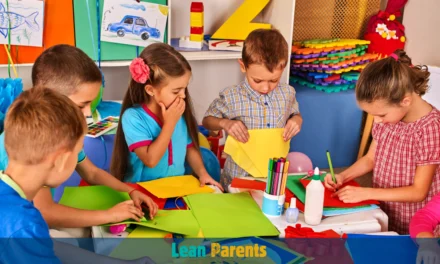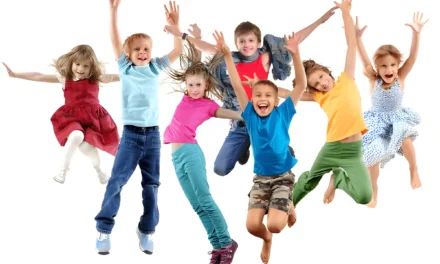Did you know that a child’s thinking and problem-solving skills change a lot from birth to being a teenager1? Piaget’s famous theory says there are four main stages of thinking development. Knowing about these stages helps parents support their kids in growing up well.
Thinking and solving problems grow in kids from babyhood to the teenage years1. At each stage, kids show different ways of thinking, from basic skills to complex thinking in teens. Learning about these stages helps us support our kids’ growth and help them succeed.
Key Takeaways
- Cognitive development is a journey that unfolds in distinct stages from birth to adolescence.
- Piaget’s theory identifies four main stages: sensorimotor, preoperational, concrete operational, and formal operational.
- Each stage is marked by specific cognitive milestones, such as object permanence, symbolic thinking, and abstract reasoning.
- Understanding these stages helps parents provide appropriate support and recognize when professional guidance may be needed.
- Cognitive growth is influenced by a child’s experiences, environment, and emotional well-being.
Understanding Childhood Cognitive Development
Cognitive development in children is a complex and fascinating field. Child psychologists have studied it a lot. The work of Jean Piaget has been key in understanding how children’s minds grow.
Historical Evolution of Child Development Theories
Piaget’s theory breaks down into four stages: Sensorimotor, Preoperational, Concrete Operational, and Formal Operational2. It shows how children think and reason at different ages. It’s not just about learning more, but how they think differently at each stage2.
Piaget saw children as always learning. They adapt their thinking to new experiences2.
The Importance of Cognitive Milestones
Cognitive milestones are key signs of healthy growth. For example, 3-year-olds struggle to tell real from fake, but 6-year-olds can spot a cat in a dog mask3. These milestones help parents and teachers see how children’s thinking changes.
Role of Parents in Supporting Development
Parents are crucial in helping children grow cognitively. Studies show that both genetics and environment play a part3. Even babies as young as 1 month show a preference for their mother’s face3. Children’s choices, like reading, also affect their development3.
Knowing about child development theories, milestones, and the role of parents helps us support children. It’s a journey of growth and discovery.
The image shows Piaget’s four stages of cognitive development. It’s a visual guide to his influential theory.
Birth to Two Months: Early Sensory Development
In the first two months, babies mainly use their senses to understand the world. They have an optical focal length of about 10 inches and like contrasts, colors, and faces4. Babies seek out stimuli, get used to familiar sights, and react more to new things. They start to tell familiar from new sights and develop likes and dislikes.
They prefer high-pitched voices and stare for a moment at places where objects have gone. This shows they are starting to understand objects4.
About 50% of newborns hold their hands mostly closed4. Around 60% will briefly look at nearby objects or toys4. About 70% can track movement4, and 80% may startle at voice or sound4.
Over 90% of babies aged 0-2 months cry when hungry or uncomfortable4. Nearly 85% calm down when spoken to or picked up4.
This early exploration of senses is key for their brain development. It helps them start to understand the world and their role in it. By focusing on these milestones, parents and caregivers can help their child grow and ensure a strong start in learning.
Nurturing Newborn Development
To help newborns grow, it’s important to give them a stimulating environment. This can include:
- Offering high-contrast toys and objects to capture their attention
- Speaking in a high-pitched, engaging tone to encourage language development
- Engaging in interactive play, such as peek-a-boo or singing nursery rhymes
- Responding promptly to their cries and needs to build a sense of security and trust
By nurturing these early sensory experiences, infants can grow well in their brain development. This lays a strong foundation for future learning and growth5.
| Developmental Milestone | Percentage of Infants |
|---|---|
| Hands primarily closed | ~50% |
| Briefly look at nearby objects/toys | ~60% |
| Ability to track movement | ~70% |
| Startle in response to voice/sound | ~80% |
| Cry when hungry/uncomfortable | >90% |
| Calming response to interaction | ~85% |
“Sensory exploration is the foundation for cognitive development in infants. By nurturing these early experiences, we can set the stage for a lifetime of learning and growth.”
As parents and caregivers, it’s key to be aware of developmental milestones. If you have any concerns, seek professional advice5. By creating a stimulating and responsive environment, we can support our infants’ brain growth. This helps them thrive in their first critical months of life.
The Sensorimotor Stage: Two to Six Months
Infants start a key developmental phase called the sensorimotor stage at birth. This stage lasts until they are about two years old. During this time, they learn about the world through their senses and actions67.
Object Exploration and Body Awareness
Between two to six months, babies start to explore objects on purpose. They also become more aware of their bodies. By doing the same things over and over, they learn about the world around them. This helps them understand that things still exist even if they can’t see them8.
Cause and Effect Learning
Babies in this stage start to understand cause and effect. They learn that their actions can lead to specific outcomes. For example, kicking a mobile or pressing a toy button can make it work. This helps them develop problem-solving skills and feel more in control8.
Development of Routines
As they grow, babies also enjoy regular routines in their lives. They feel safe and happy with predictable schedules. Routines help them develop important skills like memory and understanding sequences7.
The sensorimotor stage is vital for a child’s growth. It prepares them for learning and solving problems in the future. By exploring, understanding cause and effect, and following routines, babies shape their view of the world and their role in it.
Six to Twelve Months: Object Permanence
Between six to twelve months, babies hit a big cognitive milestone called object permanence. Object permanence usually starts around 8 months. At this time, babies start looking for hidden objects under blankets. They show they know objects still exist even when they can’t see them9.
This growth also brings on separation and stranger anxiety. Babies now understand that their loved ones and toys are still there, even when they can’t see them10. They get better at exploring with their senses and moving things around. They learn to use objects in new ways, like opening toy boxes by pressing buttons9.
| Developmental Milestone | Age Range |
|---|---|
| Initial Understanding of Object Permanence | 6-9 months |
| Actively Searching for Hidden Objects | 8-9 months |
| Tracking Visible Sequential Displacements | 12-18 months |
| Complete Understanding of Object Permanence | 18 months |
As babies grow, they get better at understanding objects. They start to remember where things are and can even find hidden items9. This helps them feel more secure and builds trust with their caregivers10.
“Momentary separations followed by happy reunions help reduce separation anxiety, as babies learn that their caregivers will always return.”
Playing with toys and games like peekaboo can help babies learn about object permanence. It makes this big step in their development easier for them10.
Cognitive Changes During Early Toddlerhood
Toddlers between 12-24 months see big leaps in problem-solving, memory, and language skills11. At 12 months, they might start hiding and finding objects, showing off their thinking11. By 24 months, they can play with more than one toy at once, a sign of growing brain power11.
Problem-Solving Abilities
During this time, toddlers get better at solving problems and planning12. They enjoy activities like drawing, pretending, and naming pictures, showing their growing brain power12. By 30 months, they can follow two-step directions, showing they understand and can follow instructions11.
Memory Development
Memory and processing skills in toddlers also get a big boost during this time12. At 2 months, they start learning and solving problems, beginning their cognitive journey12. By 36 months, they learn not to touch hot objects after being warned, showing they understand cause and effect11.
Language Acquisition
Toddlers also make huge strides in language during this period13. Babies can recognize a familiar voice by just one week old13. Between 18-24 months, they understand objects still exist even when out of sight, moving from sensorimotor to preoperational thinking13.
These changes in early toddlerhood are key for future learning, problem-solving, and language skills12. It’s important to create an environment full of interactive and sensory experiences to support their natural curiosity and learning12.
The Preoperational Stage: Ages Two to Five
Children grow a lot between ages 2 and 5. Their thinking changes a lot14. They start to think symbolically and play imaginatively14.
In the Symbolic Function Substage, kids learn to use symbols and language14. They play in a more complex way, using objects to stand for other things15. This is a big step in their thinking.
The Intuitive Thought Substage happens from 4 to 7 years old14. Kids start to understand the world better14. They learn basic ideas, but still struggle with complex thinking14. They also find it hard to see things from other people’s viewpoints1415.
As kids get older, they get better at thinking14. By age 5, they can count, know the alphabet, and recognize letters15. Their play gets more detailed, showing they can think symbolically15.
Even though kids make great progress, their thinking is still not fully developed1415. But with help from adults, they can keep improving their thinking skills.
| Key Characteristics of the Preoperational Stage | Age Range |
|---|---|
| Symbolic Function Substage | 2 to 4 years |
| Intuitive Thought Substage | 4 to 7 years |
| Development of Symbolic Thinking and Language | 2 to 5 years |
| Emergence of Egocentrism | 2 to 7 years |
| Gradual Overcoming of Egocentrism | 4 to 7 years |
“The preoperational stage is a crucial time in a child’s cognitive development, as they begin to use symbols, engage in pretend play, and grapple with their own perspective on the world.”
As kids move through the preoperational stage, they grow a lot in thinking14. They start to think symbolically and play in a more complex way14. With support from adults, they can move on to the next stage of thinking.
Early School Years: Concrete Operations
As kids start school, they enter a key phase called the concrete operational stage. This stage, from about 6 to 12 years old, is when they start to think logically and understand the world around them16.
Logical Thinking Development
At this stage, kids can think logically about things they can touch and see. They learn that actions can be reversed and that changing something doesn’t change its amount16. They also get better at looking at different parts of a problem, which helps them solve it16.
Mathematical and Scientific Understanding
Kids start to really get math and science during this time. They move from just learning to read to using reading to learn more16. They get good at figuring things out from specific examples, but still struggle with using general rules to solve problems16.
Social Cognition Growth
Kids also grow in understanding others during this stage. They start to see things from other people’s viewpoints, becoming less self-centered16. This helps them follow rules and get along with others better, preparing them for more complex social situations later on.
Parents and caregivers can help by doing activities that encourage logical thinking. Playing with blocks, showing how things stay the same even if they look different, and teaching kids to see things from other perspectives are great ways to support their development16. These efforts help kids build a strong base for even more complex thinking later on.
| Cognitive Milestone | Age Range (Western Cultures) |
|---|---|
| Conservation of Number | Around 7 years old17 |
| Conservation of Mass and Length | Around 7-8 years old17 |
| Conservation of Area | Around 8-9 years old17 |
The concrete operational stage is a key time between being very young and becoming more mature. It prepares kids for even more advanced thinking skills like logic and abstract ideas16.
“The ability to think logically about concrete objects and events is a hallmark of the concrete operational stage of cognitive development.”
By understanding and supporting the changes in thinking during early school years, parents and teachers can help kids succeed in school and socially1617.
Advanced Thinking: Ages Twelve and Beyond
As kids grow into teens, their brains start to work in new ways. Around 11 or 12, they start thinking about big ideas. This marks a big step in their thinking skills18. Not everyone gets to this level, but as they get older, they think more like adults18.
The National Institute of Mental Health found that the brain grows a lot before puberty. This growth happens mainly in the frontal lobe, which helps with planning and decision-making18. Teens learn to use logic and apply big ideas to everyday situations18. They start to think like scientists, make plans, and test them out18.
Before puberty, the brain gets better at feeling pleasure, which can lead to taking more risks18. As teens get older, they slow down a bit and start to use what they’ve learned. They get better at making decisions, but it takes time, often until their mid-20s18.
Adolescence lasts from about 9 to 21 years old. It’s divided into preadolescence, early adolescence, and late adolescence19. During this time, the brain changes a lot, especially in how it connects different parts19.
Memory gets better as teens get older because they learn new ways to think18. They also get better at focusing and doing several things at once18. They become more aware of how they think and learn, which helps them a lot18.
Not all teens reach the highest level of thinking, which starts around 11 or 1220. Many make mistakes when trying to reason logically20. What they can do well depends on their culture and education20. They might be good at some things but not others, like math versus music20.
Supporting Cognitive Development Through Play
Play is key for a child’s brain growth, teaching them to solve problems, think creatively, and critically. Educational activities that match a child’s age can really help their brain grow21. A study by Elias and Berk (2002) showed that playing together with friends helps kids who act impulsively to control themselves better21.
Play helps kids learn by solving problems, working together, being flexible, and being creative21.
Types of Educational Activities
There are many ways to help kids grow through play22. Preschoolers learn a lot by solving problems, creating, and experimenting all the time22. Play can be physical, building, talking, pretending, playing games, or socializing21.
Role of Interactive Learning
Learning together, like reading, playing games, and doing experiments, boosts brain growth21. Lev Vygotsky said that playing make-believe with others is best for learning, helping kids think and follow rules21. Play also helps kids develop important social skills like self-control, listening, and thinking on their own21.
Parents and teachers should offer many fun activities that challenge kids’ minds and encourage them to explore23. Playing with toddlers helps their brain grow by building relationships and showing them they matter23. It helps them feel confident and learn about the world23.
“The true sign of intelligence is not knowledge but imagination.” – Albert Einstein
Environmental Factors Affecting Cognitive Growth
The environment is key in a child’s brain development. A home filled with learning chances and loving support boosts their brain power24. Being around nature can make a child’s brain work 20% better24. Kids from poorer families might have brains that work 3 times less than those from richer families24.
Parents’ involvement and giving kids new experiences help their brains grow25. Being educated and having friends helps keep the brain sharp25. But, bad environments, too little stimulation, or constant stress can slow down brain growth24. People from Western cultures focus on objects, while those from East Asia see things in context, a 15% difference in thinking24.
25 Things like air pollution, the area you live in, and who lives nearby affect your brain24. Having friends can make stress less hurt your brain by 25%24. Too much noise can mess up memory and focus by 30% and 15% respectively2425. Being near green spaces can make your brain work better over time.
26 About 66% of young kids in Sub-Saharan Africa don’t reach their full brain potential26. Being poor affects how well a child’s brain grows (WPSSI Score Difference: 14.27)26. Helping a child grow up in a loving home can really help their brain.
- 24 Kids who play complex games with friends have brains that work 25% better than those who don’t24.
- 25 The area you live in, like how easy it is to get around, affects your brain over time25.
- 26 How well a child’s brain grows can affect their future job and money26.
To help kids grow their brains, we need to create a caring space for them to explore and learn. By knowing how the environment affects brain growth, we can help kids develop their minds.
Signs of Healthy Cognitive Development
It’s key to know what cognitive milestones are for each age. These include things like understanding objects are still there even when we can’t see them. Kids should also start to think symbolically, understand that things stay the same even if they look different, and reason abstractly at certain ages27. Parents should watch for these signs and talk to doctors for regular checks. If a child is not meeting these or seems to be losing skills, it’s time to get help early.
Age-Appropriate Milestones
By age 4, kids start to play near others but still struggle with sharing. They also begin to see themselves as part of a certain ethnic group27. As they get older, they use words instead of hitting to solve problems27. By 5, they work well with others, have close friends, and enjoy group play27. They also grasp ideas like before and after, up and down, and yesterday and tomorrow27.
When to Seek Professional Guidance
Watch for signs like a child not reaching milestones or losing skills. If you see these signs, getting help early is crucial. It helps find and fix any problems and supports the child’s brain growth27.
Knowing what milestones are and getting regular checks helps parents support their kids’ brain development28.
Common Challenges in Cognitive Development
While most kids grow cognitively in a normal way, some face special hurdles. Learning difficulties, cognitive delays, and developmental disorders can slow them down. These issues make it hard for kids to hit cognitive milestones on time.
Dyslexia is a common problem that makes reading and writing tough for kids29. ADHD can also be a challenge, causing trouble with focus and staying organized30. Autism spectrum disorders add to the mix, with problems in social skills, sensory processing, and thinking flexibility.
Spotting these issues early and getting help is key. Parents should watch for signs of delays or learning problems. Working with teachers and doctors is vital to offer the right support. With the right help, kids can overcome these challenges and reach their goals.
Every child grows differently, and that’s okay. By knowing the common hurdles and seeking help early, parents can support their child’s growth. This way, every step of their cognitive journey is celebrated and nurtured.
Conclusion
Learning about cognitive growth in kids helps parents support their child’s development. From infancy’s sensory play to teen’s complex thinking, each stage is a chance for growth. Parents can help by creating a caring space, playing together, and watching for important milestones.
Every child grows at their own speed, and help from experts is always there when needed. This way, parents can help their kids grow in a healthy way.
As the world’s older population grows, it’s key to know how our minds change with age. Cognitive issues can lead to serious problems like falls and long hospital stays31. Fast mental decline in seniors also raises the risk of death31.
By supporting kids’ brain growth, we help them stay mentally sharp for life. This is a big step towards a brighter future for everyone.
In short, parents have a big role in helping their kids grow mentally. By knowing how kids develop, enriching their experiences, and getting help when needed, parents can help their kids reach their full potential. This early investment in learning and growth sets the stage for a lifetime of success.
FAQ
What is cognitive development and how does it evolve through childhood?
How have child development theories evolved over time?
What are the key cognitive milestones in the first year of life?
How does cognitive development progress during early toddlerhood?
What characterizes the preoperational stage of cognitive development?
How does cognitive development change during the concrete operational stage?
What are the key features of the formal operational stage?
How can parents support their child’s cognitive development through play?
What environmental factors influence cognitive development?
How can parents recognize signs of healthy cognitive development?
What are some common challenges in cognitive development?
Source Links
- Piaget Cognitive Stages of Development
- What Is Piaget’s Theory of Cognitive Development?
- Cognitive Development in Childhood
- Child Development Milestones for 0-2 Months
- Babies’ Cognitive Development from 6-9 Months
- What Is the Sensorimotor Stage of Cognitive Development?
- What Is the Sensorimotor Stage?
- Piaget’s Sensorimotor Stage of Cognitive Development
- Object Permanence
- Object permanence: What it is and why it’s important | Lovevery
- Cognitive Development: Infants and Toddlers
- Cognitive Development in Early Childhood: Ages 0 to 3
- Cognitive Development in 0-2 Year Olds
- Piaget’s Preoperational Stage of Cognitive Development
- Preoperational Stage of Cognitive Development in Young Children
- Characteristics of Concrete Operational Stage in Cognitive Development
- Cognitive Development: Piaget’s Concrete Operations
- Cognitive Development in 11-13 Year Olds
- Adolescent Brain and Cognitive Developments: Implications for Clinical Assessment in Traumatic Brain Injury
- Formal operational stage | Description, Characteristics, & Research | Britannica
- The Benefits of Play in Cognitive Development
- Thinking and play: preschoolers
- Thinking and play: toddlers
- Describe the effects of environmental factors on cognitive processes. | TutorChase
- Individual and environmental factors associated with cognitive function in older people: a longitudinal multilevel analysis
- Psychosocial and environmental determinants of child cognitive development in rural south africa and tanzania: findings from the mal-ed cohort – BMC Public Health
- Cognitive and Social Skills to Expect From 3 to 5 Years
- Cognitive Development in Adolescence – Health Encyclopedia
- Cognitive Development – StatPearls – NCBI Bookshelf
- Cognitive Development
- Frontiers | The association of cognitive function and its changes with all-cause mortality among community-dwelling older adults

